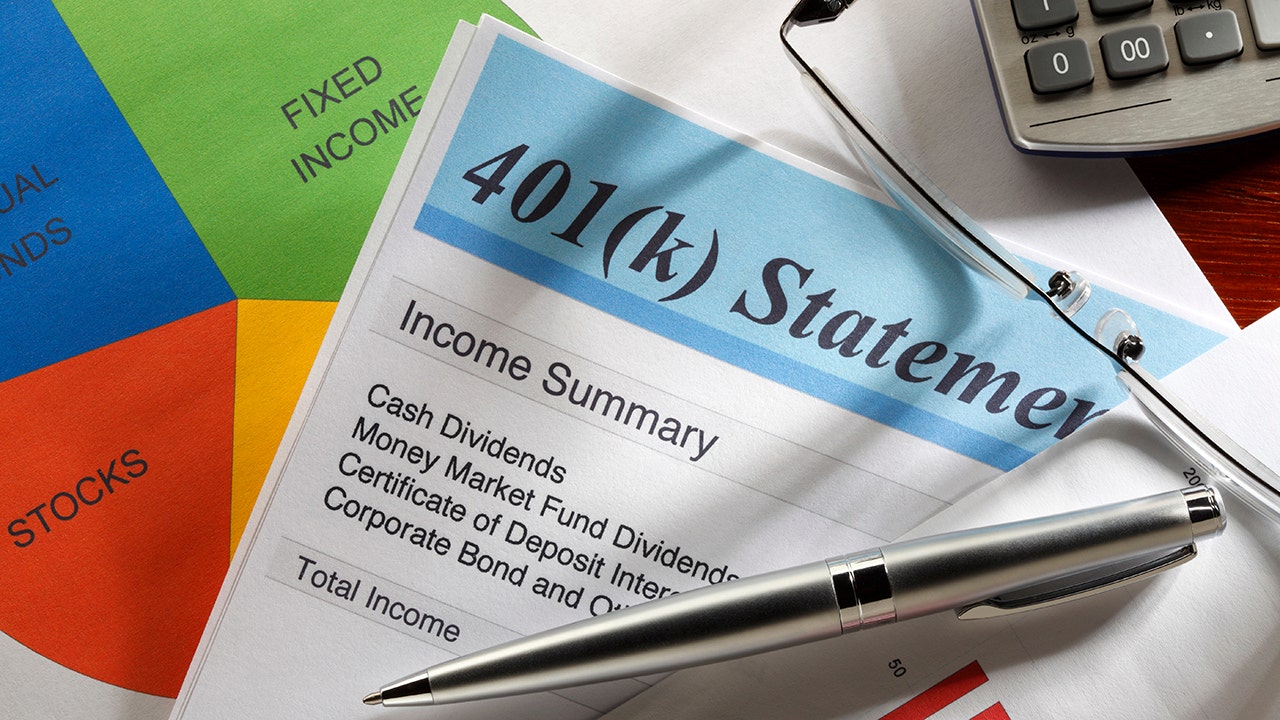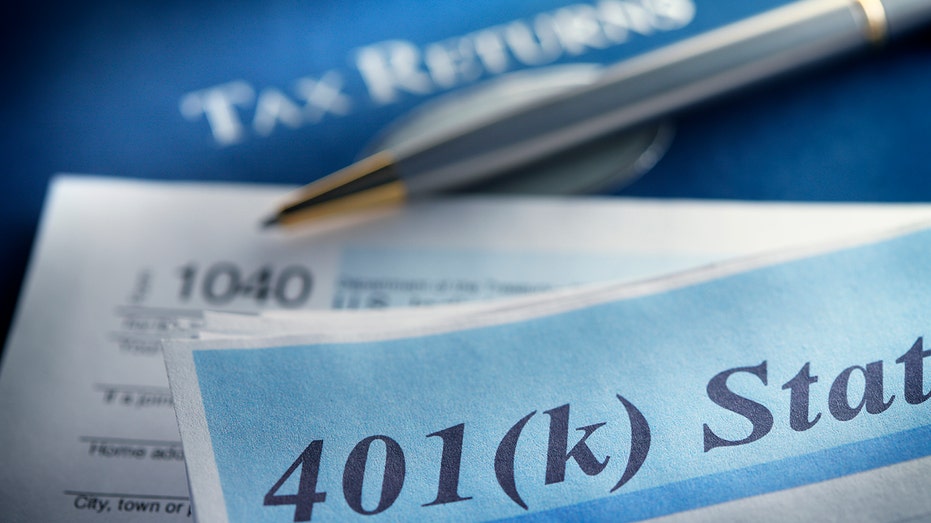
Trump donor Norm Champ details how the Biden-Harris regulations have been hurting Americans’ retirement funds on ‘The Bottom Line.’
You’ve most likely been setting aside a slice of each paycheck to feed into your 401(k) – but how much do you understand about this crucial piece of your financial future?
Your 401(k) isn’t just a retirement account; it’s a cornerstone of long-term security, a tool for growing your nest egg and an opportunity to take full control of your golden years. Yet, beneath the surface of this key utensil in your financial toolbelt lies a world of opportunities, rules and strategies that could significantly impact your future.
Here are five essential tidbits of information to help you take control of your 401(k) and build your retirement savings with confidence.
1. Vested Balances

Companies often have vesting schedules, which means the money you think you have earned from their contributions isn’t actually yours to claim until you meet a certain tenure of service. (iStock / iStock)
You might be surprised to learn that the entire balance displayed in your 401(k) account might not be yours to claim – at least, not yet.
Many employers have vesting schedules, which determine how long you’ll need to stay with the company to fully claim their contributions. These schedules mean the difference between walking away with a partial or full employer match. For example, if your company’s contributions are fully vested at three years of service, leaving for another job without meeting that threshold could mean you’re only entitled to a portion – or even none – of their contributions.
Let’s say your 401(k) account shows a balance of $30,000, with $20,000 coming from your personal contributions and $10,000 from your employer’s match. If you’re only 50% vested due to your tenure, you’d only walk away with $25,000 – your $20,000 contribution and 50% of your employer’s match.
Knowing your vesting schedule can help you make informed decisions about staying with your employer or moving on to other opportunities.
2. Roth 401(k) vs. Traditional 401(k)

401ks can come in two types – Roth and traditional. Picking which one best suits your needs is critical to maximizing your retirement potential. (iStock / iStock)
Not all 401(k) plans are created equal, and choosing between a Roth 401(k) and a traditional 401(k) can significantly impact your financial future. Understanding the difference is key to maximizing your retirement savings and making tax-smart decisions.
With a Roth 401(k), you contribute after-tax dollars, meaning taxes on money put into the account are paid upfront. The reward? When you withdraw funds during retirement, they’re completely tax-free. It’s an excellent option if you want to get your tax concerns out of the way and get a better feel of how much money you might be working with once you put away your timecard.
Roth 401(k)s have downsides as well, however. You might feel the financial pinch immediately after changing your 401(k) selection and finding that your paycheck is smaller than before. Roth contributions also don’t provide an immediate reduction in your taxable income, meaning you could miss out on a valuable tax break right now.
A more popular traditional 401(k) option, on the other hand, might offer an immediate tax break, but at the expense of paying upon withdrawal. Deciding between the two depends on your current tax situation and your expectations for retirement.
3. Small Amounts are Powerful Amounts

Setting aside just 1% of your income for retirement can have a massive impact down the road. (iStock / iStock)
It’s easy to feel like small contributions to your 401(k) won’t make much of a difference, but the truth is, even seemingly minor adjustments can have a profound impact over time.
“Employees often don’t realize how much impact investing just 1% or more or starting one year sooner can have on retirement earnings by the time you reach retirement,” Michael Shamrell, vice president of Thought Leadership for Fidelity Workplace, told Fox News Digital.
This is the magic of compounding interest – the phenomenon where your savings generate earnings and those earnings, in turn, generate even more earnings. Increasing your contributions by just 1% of your salary can compound to potentially add thousands to your nest egg with time, landing you in a better position for retirement instead of keeping that 1% of your paycheck to enjoy right now.
Starting early has a similarly profound impact. Though it’s never too late to decide to secure your financial future, planning for retirement beginning at age 25 would grant you significant leverage over someone whose retirement investments began a decade later.
The takeaway? Time is your most valuable asset. Starting early, contributing consistently and understanding the big impacts of small changes are all keys to securing your future.
4. Employer Matches: Don’t Miss Out on Free Money

Taking advantage of your employer’s 401k match is an easy way to get “free money” for retirement. (iStock / iStock)
Free money sounds wonderful, doesn’t it?
Your 401(k) isn’t just a vehicle for your savings – it also gives your employer the opportunity to invest in your future. You probably know that most employers offer a matching contribution, which is essentially free money for your retirement. What is a “match,” exactly? This occurs when employers contribute to your 401k based on how much you choose to contribute.
For example, your employer might match 100% of your contributions up to 3% of your salary or 50% of your contributions up to 6%, meaning you would need to contribute 6% of your income to 401(k) to achieve that maximum benefit from your employer. Many workers fail to maximize this benefit’s potential by simply not contributing enough to trigger that full match.
“If your employer matches any portion of your retirement contributions, consider maxing out by contributing up to at least the match amount,” Shamrell advised.
“This is considered part of your compensation package and is, in essence, free money. Many people don’t realize this, which is why 1 in 4 workers miss out on their full match.”
5. You can save more than you think
Michael Shamrell, vice president of Fidelity’s workplace investing thought leadership, shares how to best save for retirement based on your age and salary.
Many people assume they’re limited to the annual 401(k) contribution cap, which comes in at $23,000 or $30,500 with catch-up contributions if you’re 50 or older this year, but you can actually save more than that.
“You can actually contribute more than the annual 401(k) limit with after-tax contributions,” Shamrell said.
Though Roth IRAs (or independent retirement accounts) have income caps, 401(k) plans are different when it comes to Roth contributions, according to Fidelity.
“Once you see that you will max out your contributions, you may want to consider making after-tax contributions if your plan allows. These are a third type of contribution to your workplace savings plan, in addition to pre-tax and Roth,” an article from the company reads.
These contributions can be made at the same time as your other contributions. But Fidelity advises making sure that your contributions aren’t so high they “prevent you from fully making pre-tax and Roth contributions first.”
GET FOX BUSINESS ON THE GO BY CLICKING HERE
Ramsey Solutions personality Jade Warshaw breaks down how to get the most out of your Social Security check and more on ‘The Bottom Line.’



